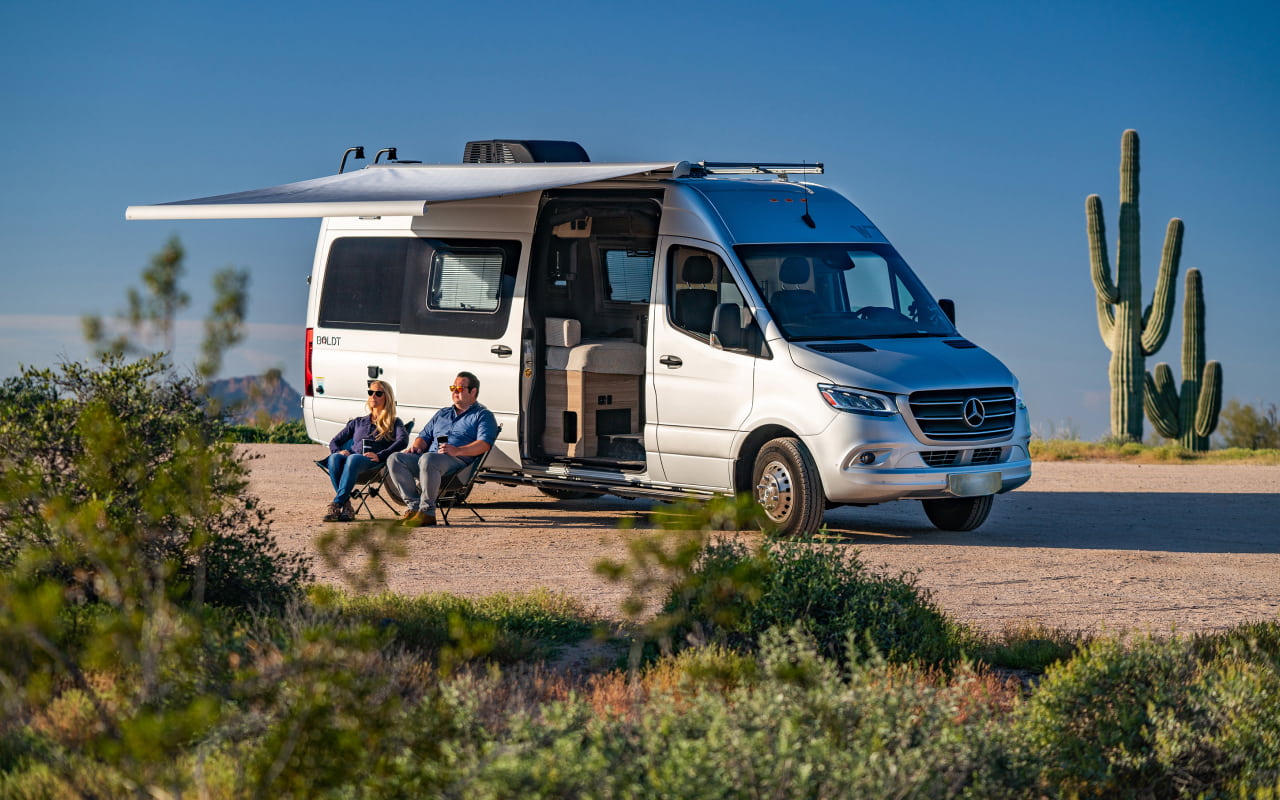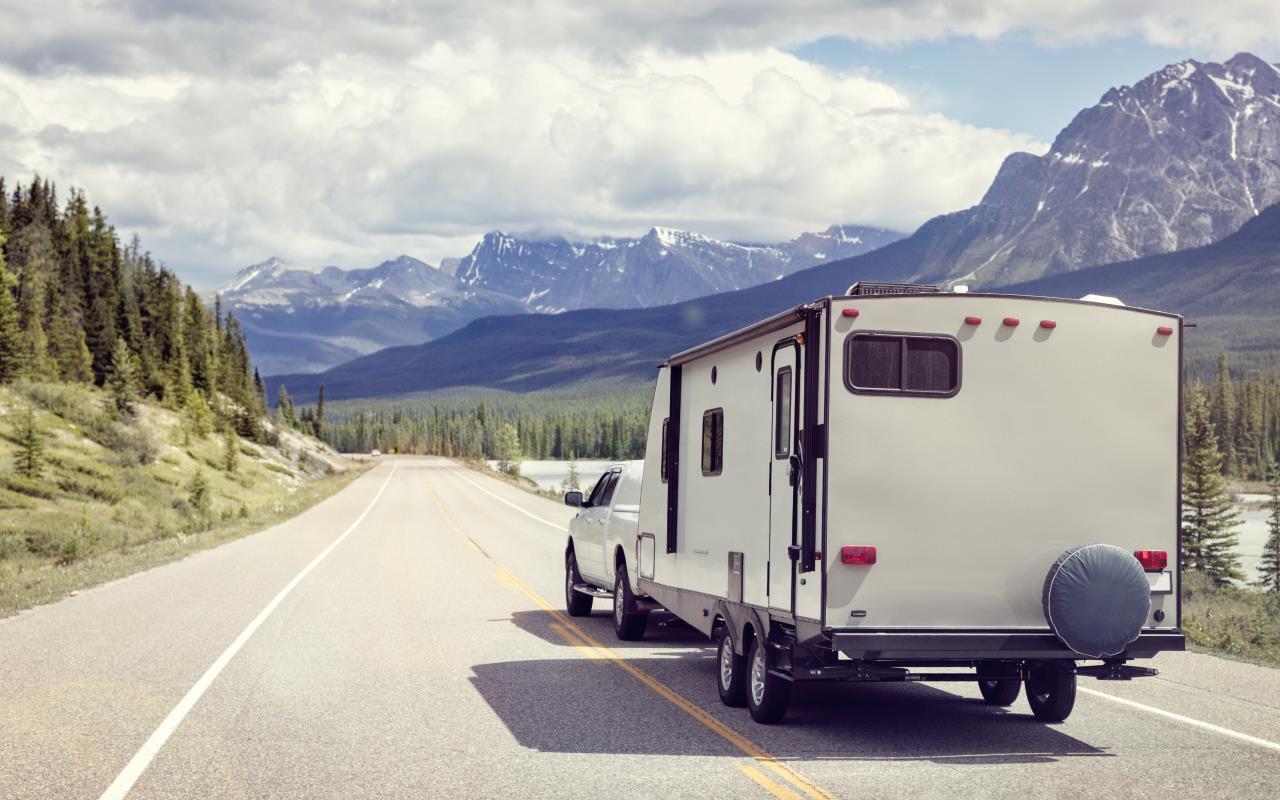
From the beauty of driving through snow-capped mountains to the stillness of a winter’s morning, the cooler months of the year are still an excellent time to go RVing. Like taking an RV trip in the spring or summer, you still have plenty of destinations and activities to choose from. Whether it’s camping or spending a weekend at your favorite ski area, there are tons of fun things to do when winter RV camping.
With that in mind, there are several things RVers will need to consider that they normally wouldn’t if they’re RVing in the winter. From interior and exterior maintenance to trip prep, winter RVing adds some additional considerations to keep in mind. With this helpful guide from the experts at Lazydays RV, you’ll be ready to hit the road this winter! Check out our five favorite winter camping tips for RVers.
1: Insulate EVERYTHING
The most common hazard that befalls RVs during a winter trip is freezing. Whether it’s frozen pipes or ice on the windshield, there are plenty of ways ice can accumulate inside and outside your RV. The most important areas of your RV to protect are the holding tanks and plumbing systems. Droplets or small pools of water can freeze in the areas, resulting in cracks and tears in the tank linking or pipe. As a result, leaks occur that can result in further damage.
To prepare for winter RV travel, a few easy ways to get ready include:
- Wrapping your pipes in heat tape
- Filling your freshwater tank instead of using a water line at a campground. This prevents ice-cold water from being introduced into your plumbing system.
- Ensure your windows are properly sealed. Windows are the most common areas where heat can escape, and a loose window seal can result in a chilly morning wakeup.
Beyond insulating your pipes, prepping your holding tanks and ensuring your windows are properly sealed, you’ll also want to place weather-stripping or replace loose seals around the windows and doors of your RV. Heavy drapes are another helpful trick to retain heat in your cab.
2: Pack an Extra for Every Item of Clothing
The last thing you want is to forget your cozy ski jacket or cap. To prevent this, and to have a backup in case something gets torn or too dirty to wear, do your best to pack an extra for each item of winter clothing. Having a second beanie, a few extra pairs of wool socks, and another set of cozy sweats can make a world of a difference.
If you’re a regular fall/winter traveler, pre-pack your RV with these items at the start of the season. If you’re pressed for storage, check out a few of our favorite RV storage hacks to help you get the most out of the space in your RV.
3: Be Selective with Your Destinations Based on Your Comforts and Abilities
Winter RVing offers a ton of different, fun experiences that you only get in the later and early months of the year. With that, the weather offers several challenges that you should consider when picking your winter camping destination. The first thing you should always consider is road conditions. Snow and ice are hazards that must be taken into account. Make sure you are comfortable driving in these types of conditions, have a set of chains ready, and know-how to attach them. Mountain roads can be especially tricky to navigate in the winter, so make sure your rig is ready before your next RV ski trip.
4: Have the Right Type of Heater
A space heater can make or break a winter RV trip. Make sure you have the right space heater (or two) for your type of RV. Class A owners may need a few large ones to keep their entire coach warm, while a Class B only needs one. Space heaters not only help to keep you warm; they also can keep pipes and valves warm. If you’re worried about a faucet or bathroom pipes freezing, direct some warmth at them to put your mind at ease. As a good safety rule, don’t leave space heaters on when you’re away from your RV.
If your RV has a furnace or fireplace, clean the vents and ducts to prevent dust from blowing into the cabin. If you’re not sure when you had it serviced last, take it in and have one of our expert RV service technicians ensure it’s ready for use.
5: Make Sure Your Tires and Engine Are in Winter “Mode”
With your RV interior ready for the winter, you’ll want to next ensure your engine and tires are up for the task. Double-check your tire’s air levels are correct and ensure that any chains for tires are in an easily-accessed spot. Next, inspect your batteries and look for any signs of corrosion or damage. Then double-check their charge. Fully charged batteries won’t freeze and are vital if you will not be hooking up to external power when RVing in the winter.
Finally, do a quick check of your engine. Start with the coolant and confirm you have the proper ratio of antifreeze to water, and that that the lines are in good shape. The coolant mix should be ½ antifreeze and ½ water during the cold winter months. If you’re heading somewhere especially cold, make sure your engine block heater is good to go.
If you’re ready to hit the road, make sure to visit our RV accessories store for the best selection of RV parts and winter travel accessories. Ready for a new RV for your upcoming winter trip? Stop by your local RV dealership to start shopping!



